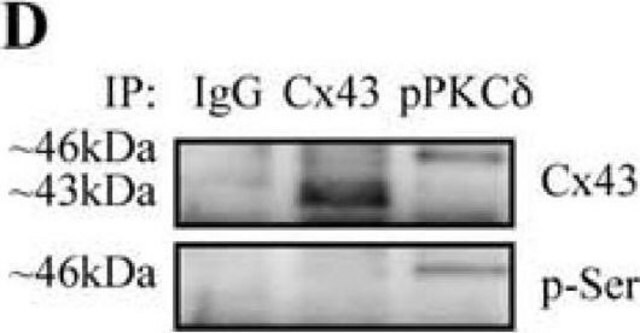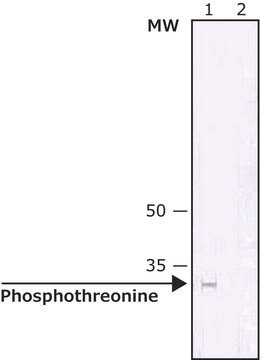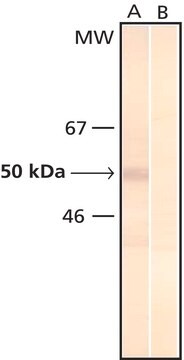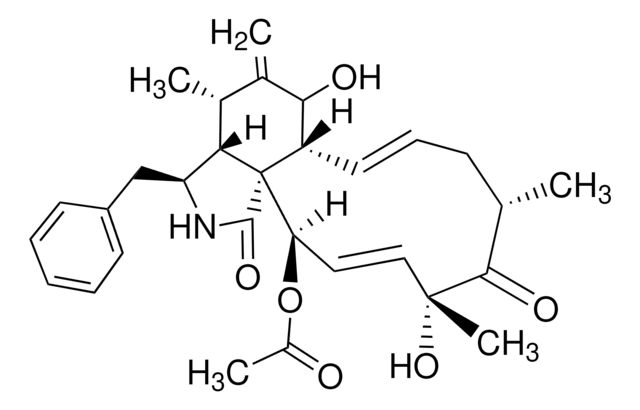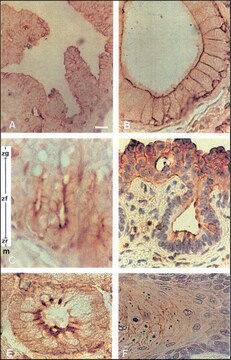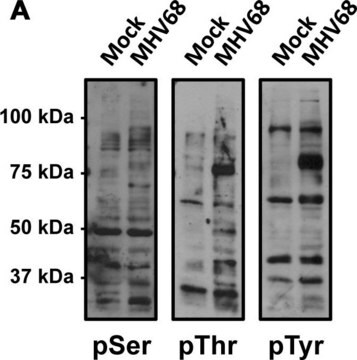P3555
Monoclonal Anti-Phosphothreonine antibody produced in mouse
clone PTR-8, ascites fluid
Sinónimos:
Monoclonal Anti-Phosphothreonine, Phospho Thr, Phospho Threonine, Phospho−Thr, Phospho-Threonine, p-Thr
About This Item
Productos recomendados
biological source
mouse
Quality Level
conjugate
unconjugated
antibody form
ascites fluid
antibody product type
primary antibodies
clone
PTR-8, monoclonal
contains
15 mM sodium azide
technique(s)
indirect ELISA: 1:4,000
western blot: 1:50
isotype
IgG2b
shipped in
dry ice
storage temp.
−20°C
target post-translational modification
unmodified
¿Está buscando productos similares? Visita Guía de comparación de productos
General description
Immunogen
Application
Mouse monoclonal clone PTR-8 anti-phosphothreonine antibody may be used for the localization of phosphorylated threonine using various immunochemical assays such as ELISA, dot blot, and immunoblotting. Due to steric hindrance of the recognition site, this antibody may not recognize certain proteins known to contain phosphorylated threonine.
Biochem/physiol Actions
Disclaimer
¿No encuentra el producto adecuado?
Pruebe nuestro Herramienta de selección de productos.
Related product
Storage Class
10 - Combustible liquids
wgk_germany
WGK 3
flash_point_f
Not applicable
flash_point_c
Not applicable
Certificados de análisis (COA)
Busque Certificados de análisis (COA) introduciendo el número de lote del producto. Los números de lote se encuentran en la etiqueta del producto después de las palabras «Lot» o «Batch»
¿Ya tiene este producto?
Encuentre la documentación para los productos que ha comprado recientemente en la Biblioteca de documentos.
Los clientes también vieron
Nuestro equipo de científicos tiene experiencia en todas las áreas de investigación: Ciencias de la vida, Ciencia de los materiales, Síntesis química, Cromatografía, Analítica y muchas otras.
Póngase en contacto con el Servicio técnico